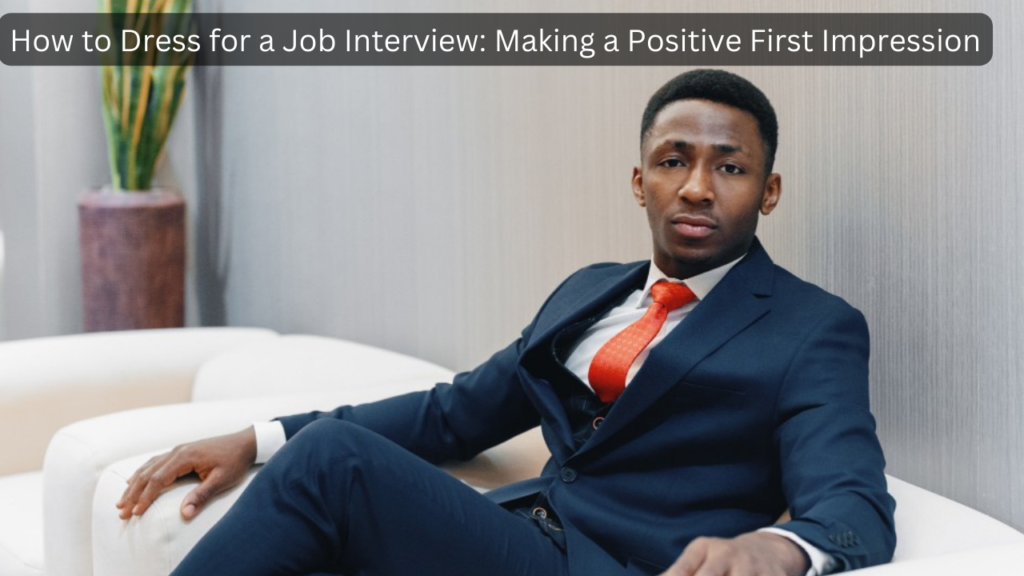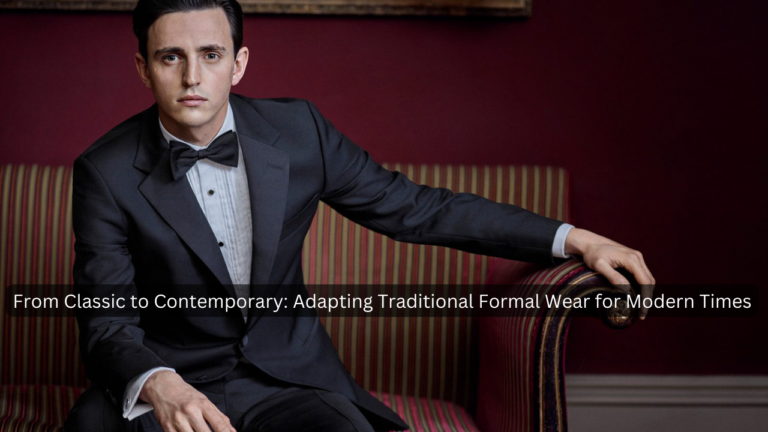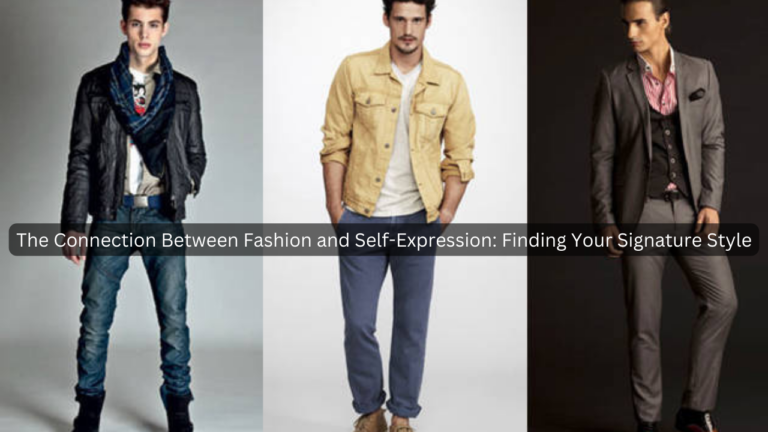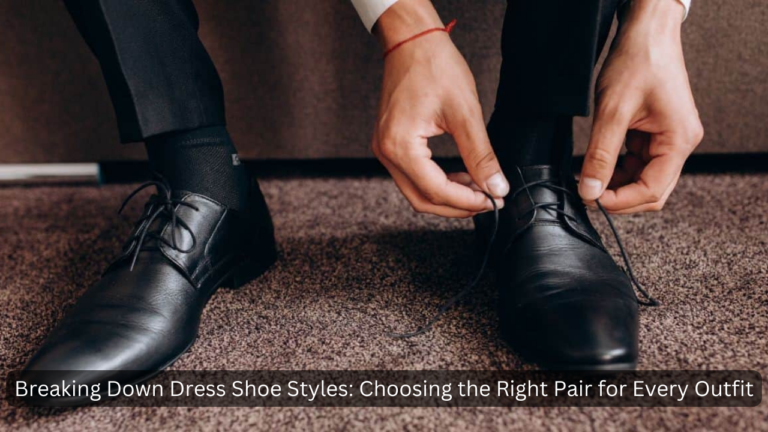

Table of Contents
Introduction
In today’s competitive job market, where qualifications often closely match among candidates, making a positive first impression can significantly tip the scales in your favor. While skills and experience are crucial, your appearance and how you present yourself during a job interview play a pivotal role in shaping initial perceptions. This article delves into the art of dressing for success in job interviews, highlighting not just the importance of appropriate attire but also how it contributes to your overall professional image.
Importance of Dressing for Success in Job Interviews
Dressing appropriately for Dress for a Job Interview is more than just wearing the right clothes; it’s about demonstrating respect for the opportunity and showcasing your readiness for the role. Your attire communicates your understanding of the company’s culture and your ability to fit into their professional environment. Employers often use your appearance as an indicator of your attention to detail, level of preparation, and respect for the interview process itself.
Making a Memorable First Impression
The adage “you never get a second chance to make a first impression” holds especially true in job interviews. Within the first few seconds of meeting you, interviewers form initial judgments that can influence their perception of your suitability for the position. Your attire sets the tone for this encounter, offering a visual representation of your professionalism, confidence, and alignment with the company’s values. By dressing appropriately and thoughtfully, you not only create a positive initial impact but also pave the way for a focused discussion on your qualifications and potential contributions to the organization.
Researching the Company Culture
Before selecting your interview attire, it’s crucial to conduct thorough research on the company’s culture. Every organization has its own unique atmosphere and expectations regarding employee appearance. Understanding these nuances can help you make informed decisions that align with their values and preferences.
Understanding the Company’s Dress Code
Some companies have explicit dress codes outlined in their employee handbooks or on their websites. These guidelines typically specify acceptable attire for different levels of formality, from casual Fridays to business formal dress for client meetings or executive presentations. By familiarizing yourself with these policies, you gain insights into the company’s professional standards and expectations.
Tailoring Your Outfit to Match the Company Culture
Once you have a grasp of the company’s dress code and culture, you can tailor your outfit accordingly. For conservative industries like finance or law, opt for classic business attire such as a well-fitted suit in neutral colors like navy or charcoal, complemented by a crisp dress shirt and polished shoes. In contrast, creative fields like advertising or tech startups may encourage more individuality and trendiness in attire, allowing for stylish interpretations of business casual or smart casual wear.
General Tips for Dressing for a Job Interview
Dress for a Job Interview involves more than just rehearsing your answers—it’s also about expressing yourself professionally through your attire. Here are essential tips to help you dress for success:
Choosing Appropriate Colors and Fabrics
Colors: Opt for conservative and neutral colors like navy, charcoal gray, black, or beige for suits and blazers. These colors convey professionalism and are versatile across different industries.
Fabrics: Choose high-quality fabrics such as wool blends or cotton for suits and blouses. These materials not only look polished but also ensure comfort and breathability throughout your interview.
Ensuring Proper Fit and Comfort
Suit Fit: Your suit should fit comfortably without being too tight or too loose. Jackets should allow for easy movement, and pants should be tailored to an appropriate length and fit.
Shirt Fit: Shirts should fit well around the shoulders and torso. Avoid overly tight or baggy shirts as they can detract from a polished appearance.
Paying Attention to Grooming and Personal Hygiene
Hair and Nails: Ensure your hair is neatly styled and groomed. Keep facial hair trimmed and tidy if applicable. Nails should be clean and well-manicured.
Personal Hygiene: Pay attention to personal hygiene by ensuring fresh breath, clean hands, and subtle fragrance if desired. Avoid overpowering scents that may distract during the interview.
By adhering to these guidelines, you not only present yourself professionally but also demonstrate your attention to detail and respect for the interview process. Your attire and grooming choices should enhance your confidence and create a positive impression that complements your qualifications and skills.
Men’s Interview Attire
When Dress for a Job Interview, understanding the difference between formal and business casual attire is key to making the right impression. Here’s how to navigate both options effectively:
Formal vs. Business Casual Attire
Formal Attire:
Suit: Opt for a well-tailored suit in classic colors like navy, charcoal gray, or black. A two-piece suit consisting of a jacket and matching trousers is standard.
Shirt: Choose a long-sleeved dress shirt in a solid color or subtle pattern like stripes or checks. Crisp white or light blue shirts are safe choices.
Tie: Wear a conservative silk tie that complements your suit and shirt. Avoid flashy colors or patterns that may distract.
Footwear: Leather dress shoes in black or brown are appropriate. Ensure they are polished and in good condition.
Accessories: Minimalist accessories such as a leather belt and a classic watch can complete the look.
Business Casual Attire:
Blazer: Instead of a full suit, wear a tailored blazer in a neutral color paired with dress trousers or chinos.
Shirt: Opt for a dress shirt or a neatly pressed button-down shirt. You can experiment with colors and subtle patterns in business casual settings.
Trousers: Choose dress trousers or chinos in colors like khaki, navy, or gray.
Footwear: Leather loafers, derbies, or dress shoes in brown or black are suitable. Socks should complement your trousers.
Accessories: A leather belt and a watch can add a touch of refinement without being too formal.
Suit Essentials
Fit: Ensure your suit fits well across the shoulders and torso. Sleeves should end at your wrist bone, and trousers should have a slight break at the top of your shoes.
Color and Fabric: Stick to classic colors and high-quality fabrics like wool blends or cotton. Avoid overly shiny or loud fabrics.
Details: Pay attention to details such as lapel width, button stance, and jacket vents. These elements contribute to the overall look and feel of your suit.
Footwear and Grooming Tips
Footwear: Invest in polished leather dress shoes that are comfortable to walk in. Avoid shoes that are scuffed or worn out.
Grooming: Ensure your hair is neatly styled and facial hair (if any) is groomed. Trim nails and maintain clean hands. A subtle cologne can be used sparingly.
By understanding these distinctions and adhering to these tips, you can confidently choose the right attire for any job interview, projecting professionalism and readiness for the role. If you have specific questions about accessories or grooming routines, feel free to ask for more detailed advice!
Dressing for Different Industries
When preparing for Dress for a Job Interview, understanding the appropriate attire for different industries can enhance your professional image and align with company culture expectations. Here’s how to dress for success in various fashion industry settings:
Tech/Startup Environments
Tech and startup environments often prioritize creativity and innovation while maintaining a casual atmosphere:
Men: Opt for a smart casual look with a polished edge. A tailored blazer paired with dark jeans or chinos can strike the right balance between professionalism and comfort.
Women: Consider a well-fitted blouse or a professional top paired with tailored pants or a smart skirt. Adding a statement accessory or stylish shoes can showcase personality while remaining professional.
Corporate Settings
Corporate environments typically adhere to more traditional and formal dress codes:
Men: Choose a classic suit in navy, charcoal gray, or black. Pair it with a crisp dress shirt and a conservative tie. Polish your dress shoes and opt for minimal accessories.
Women: Wear a tailored suit or a professional dress in neutral colors. Avoid overly trendy or casual attire. Opt for closed-toe shoes and simple, elegant accessories.
Creative Fields
Creative fields encourage individuality and often embrace more casual or artistic attire:
Men: Express your personal style with a well-fitted blazer paired with stylish trousers or dark jeans. Incorporate unique accessories or a statement piece to showcase creativity.
Women: Experiment with colors, patterns, and textures while maintaining a polished look.
Consider pairing a tailored blazer with a chic dress or trendy separates. Incorporate artistic accessories or footwear to reflect your creativity.
Tips for All Industries
Research: Understand the company culture and dress code expectations through online research or networking contacts.
Fit: Ensure your attire fits well and is comfortable. Avoid overly tight or loose clothing.
Grooming: Maintain a neat appearance with well-groomed hair, trimmed nails, and polished shoes.
Confidence: Wear attire that makes you feel confident and aligns with your personal brand while respecting the industry norms.
By adapting your interview attire to fit the specific industry and company culture, you demonstrate professionalism, respect, and readiness to contribute effectively to the organization. If you need further advice on industry-specific attire or styling tips, feel free to ask!
What Not to Wear: Common Interview Outfit Mistakes
During Dress for a Job Interview, your attire plays a crucial role in shaping first impressions. Avoid these common outfit mistakes to maintain professionalism and make a positive impact:
Overly Casual Clothing: Avoid wearing overly casual attire such as jeans, t-shirts, sneakers, or flip-flops, even in more relaxed work environments. Opt for more polished and professional alternatives.
Ill-Fitting Clothes: Clothing that is too tight, too loose, or wrinkled can detract from your overall appearance. Ensure your outfit fits well and is properly tailored to your body shape.
Distracting Accessories: While accessories can complement your outfit, avoid wearing overly flashy or distracting items. Opt for subtle and professional accessories that enhance rather than overpower your appearance.
Inappropriate Footwear: Avoid wearing worn-out or scuffed shoes. Flip-flops, sandals, and sneakers are generally not suitable for most interview settings. Opt for polished dress shoes that are appropriate for your chosen attire.
Strong Perfumes or Colognes: While personal grooming is important, overpowering scents can be distracting or even off-putting. Opt for subtle or fragrance-free options to avoid overwhelming the interviewer.
Loud or Busy Patterns: While patterns can add personality, overly loud or busy patterns can be distracting. Stick to subtle patterns or solid colors for a more professional look.
Revealing Clothing: Avoid clothing that is too revealing or provocative. This includes low-cut tops, short skirts or shorts, and clothing that may be perceived as inappropriate for a professional setting.
Untidy Hair and Nails: Pay attention to grooming details such as neatly styled hair, trimmed nails, and clean hands. These small details contribute to an overall polished appearance.
Items to Avoid to Maintain Professionalism
Graphic T-Shirts or Slogans: Shirts with slogans, logos, or graphics can be seen as unprofessional. Opt for solid or subtly patterned shirts instead.
Casual Outerwear: Avoid casual jackets, hoodies, or sportswear unless specifically appropriate for the company culture and industry.
Heavy Makeup or Excessive Jewelry: Keep makeup and jewelry minimal and tasteful. Avoid wearing excessive jewelry or bold makeup that may distract from your qualifications.
Unkempt Clothing: Ensure your clothing is clean, pressed, and in good condition. Avoid worn-out or faded garments that can detract from a professional appearance.
By avoiding these common interview outfit mistakes and opting for attire that reflects professionalism, you can confidently present yourself as a capable and serious candidate. Remember, your appearance should complement your qualifications and demonstrate respect for the opportunity.
Beyond Clothing: Non-Verbal Cues
In addition to dressing appropriately, mastering non-verbal cues such as body language can significantly impact how you are perceived during Dress for a Job Interview. Here’s why non-verbal communication matters and tips to enhance your presence:
Importance of Body Language
Your body language communicates volumes about your confidence, professionalism, and engagement in the interview process. Employers often assess non-verbal cues to gauge your suitability for a role and how well you may fit into their organizational culture.
Confidence and Posture Tips
Eye Contact: Maintain natural and confident eye contact with your interviewer(s). It shows attentiveness and sincerity.
Smile: A genuine smile can convey warmth and approachability. However, avoid overdoing it; a relaxed and friendly smile is ideal.
Posture: Sit up straight with your shoulders back. Good posture exudes confidence and portrays you as attentive and alert.
Hand Gestures: Use natural hand gestures to emphasize points, but avoid excessive or distracting movements.
Mirroring: Subtly mirror the interviewer’s body language to build rapport and show engagement.
Active Listening: Demonstrate active listening by nodding occasionally and using verbal cues like “yes” or “I understand” when appropriate.
Avoid Fidgeting: Minimize fidgeting or tapping, as it can convey nervousness or distraction.
By mastering these non-verbal cues, you complement your professional attire with confident and engaging body language. This holistic approach enhances your overall impression during the interview and increases your chances of leaving a positive and memorable impact.
Conclusion
Dressing for success in job interviews goes beyond mere attire; it’s about presenting yourself as a professional who is prepared, respectful of the opportunity, and aligned with the company’s culture. Here’s a recap of key points and final tips to ensure you make a lasting impression:
Recap of Key Points
Research Company Culture: Understand the company’s dress code and culture to tailor your attire accordingly.
Choose Appropriate Attire: Select outfits that align with the industry and interview setting (formal, business casual, or creative).
Ensure Proper Fit and Comfort: Your attire should fit well and allow you to move comfortably.
Pay Attention to Grooming: Maintain neat hair, groomed nails, and subtle grooming products.
Mind Non-Verbal Cues: Project confidence through your body language, including eye contact and posture.
Final Tips for Dressing for Success in Job Interviews
Plan Ahead: Lay out your outfit the night before to avoid last-minute stress.
Practice Makes Perfect: Conduct a mock interview to ensure your attire and non-verbal cues convey professionalism.
Seek Feedback: Ask for input from mentors or trusted friends on your interview attire and overall presentation.
Be Yourself: While dressing professionally is crucial, let your personality shine through in a way that aligns with the company’s culture.
By carefully considering these factors, you not only enhance your professional image but also demonstrate your readiness and respect for the interview process. Your attire and demeanor should complement your qualifications and leave a positive and memorable impression on potential employers.





